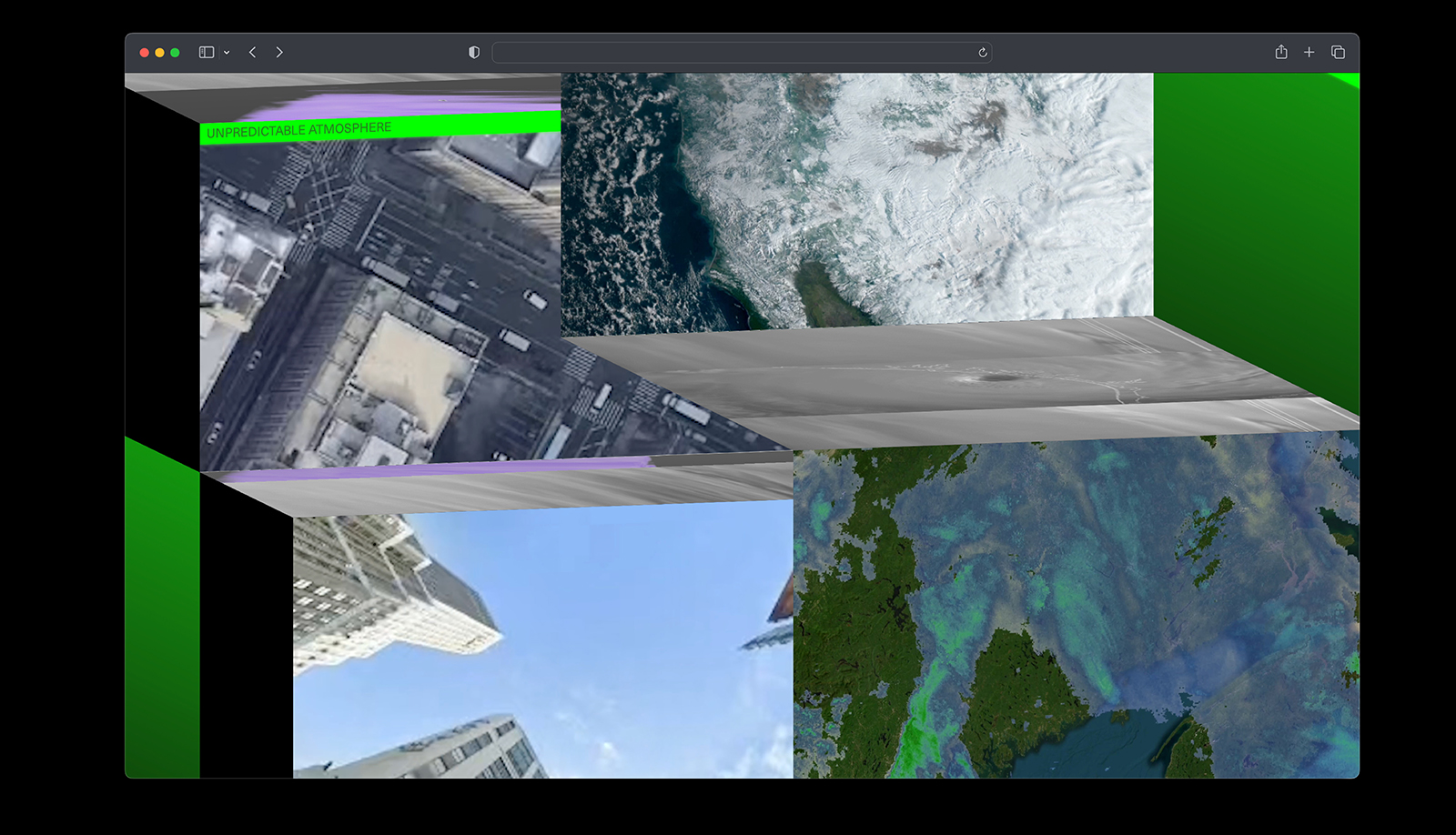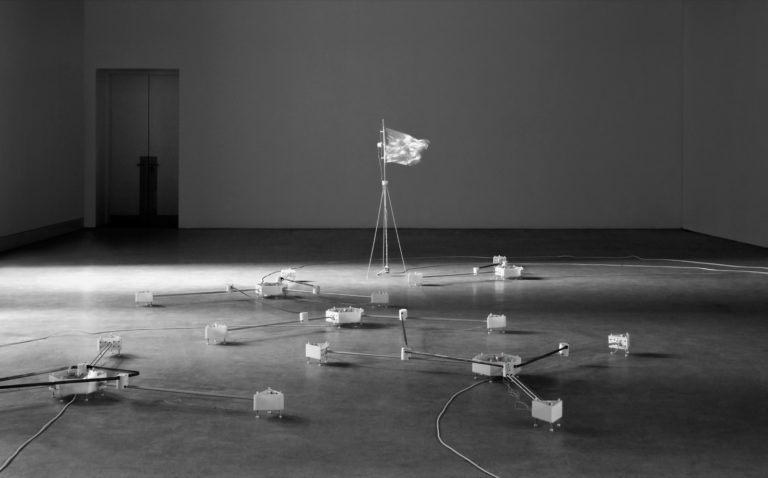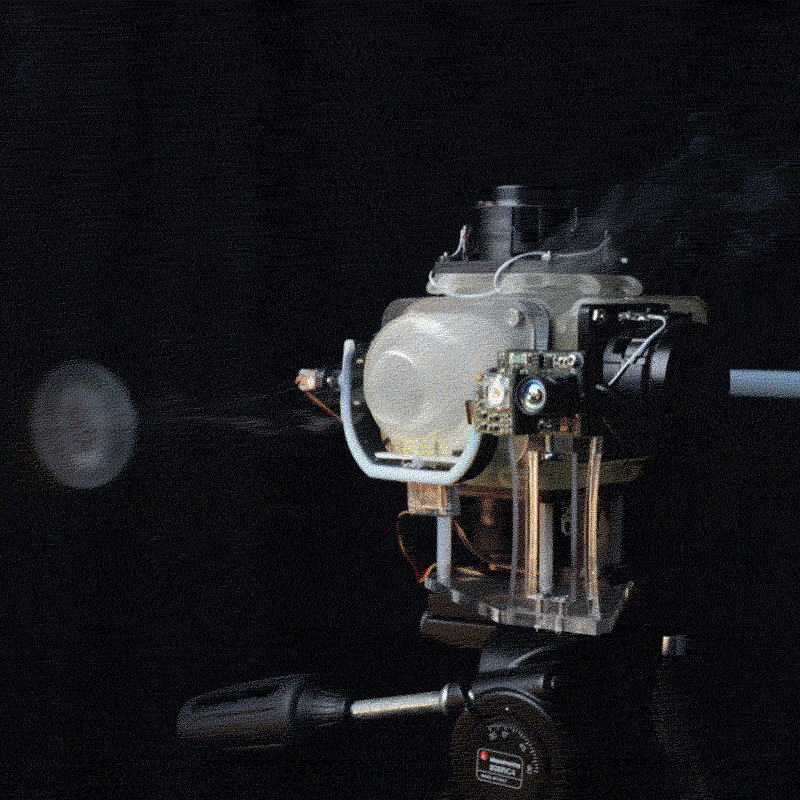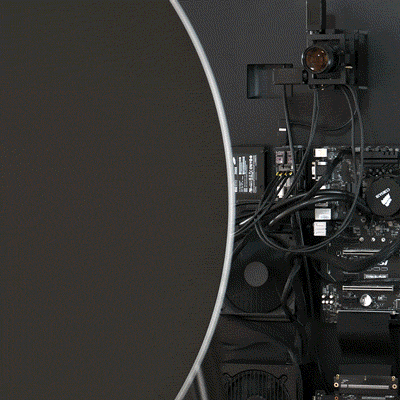Unpredictable atmosphere is a research project that investigates a thin and unstable layer above the ground where data, both transmitted and collected, acquire new dimensions in an invisible landscape of conflict.
Research agencies collect essential weather data for predictive models by measuring the vibration of water vapor particles. Weather tracking systems detect the atmosphere within the 24 GHz frequency of the electromagnetic spectrum. In recent years, telecommunications companies have selected, and therefore share, the same band for new high speed networks (high-band 5G), which have been found to obstruct the collection of atmospheric data. 5G networks in fact cause a loss in weather data. These open bands on the spectrum have become spaces of political conflict – causing instability – and the critical proximity between the two systems generates new forms of interference.



The conflict is between a race for speed for telecommunications industries seeking a faster and broader network; and the meteorological research agencies loss of data, and hence the risk of setting back the world’s weather forecasting capabilities by 40 years.
This research seeks to experiment creatively with technological tools embedded in the systems I am analyzing to conduct an aesthetic investigation (Weizman 2014), and to redraw the space of uncertainty that exists in the prediction of future climate models for a public audience.
The process of deconstructing this abstract and contested territory will involve analyzing weather and climate data focusing on the opaque processes behind Radio Frequency Allocation Policies, with the aim of revealing the critical spatial dimension of the atmosphere as a contemporary Climatic Media (Furuhata 2022).
This contested multidimensional space becomes a new ground for experimentation that sees computation as a lens through which to look at this territory as a Critical Zone (Latour, Weibel 2017), a complex space where different branches of science and design practices can visualize, conceptualize, critique, and provoke new vibrant aesthetics, drawing attention to a complex and invisible system.
Explore more on the UA24GHZ website and Computational Design Practices Columbia GSAPP archive.
Learn about the theoretical structure, technical tools, and methodology here.
Project Page | Lucia Rebolino | instagram: @luciarebolino
Latour, B., Facing Gaia: Eight Lectures on the New Climatic Regime, Polity Press, 2017 ↩︎
Latour, B., & Weibel, P., Critical zones: The science and politics of landing on Earth, ZKM Center for Art and Media Karlsruhe, 2017 ↩︎
Weizman, E., Fuller M., Investigative Aesthetics: Conflicts and Commons in the Politics of Truth, Verso Book, 2021 ↩︎
Latour, B., Down to Earth: Politics in the New Climatic Regime, Polity Press, 2018 ↩︎
Furuhata, Y., Climatic Media, Duke University Press, 2022 ↩︎














